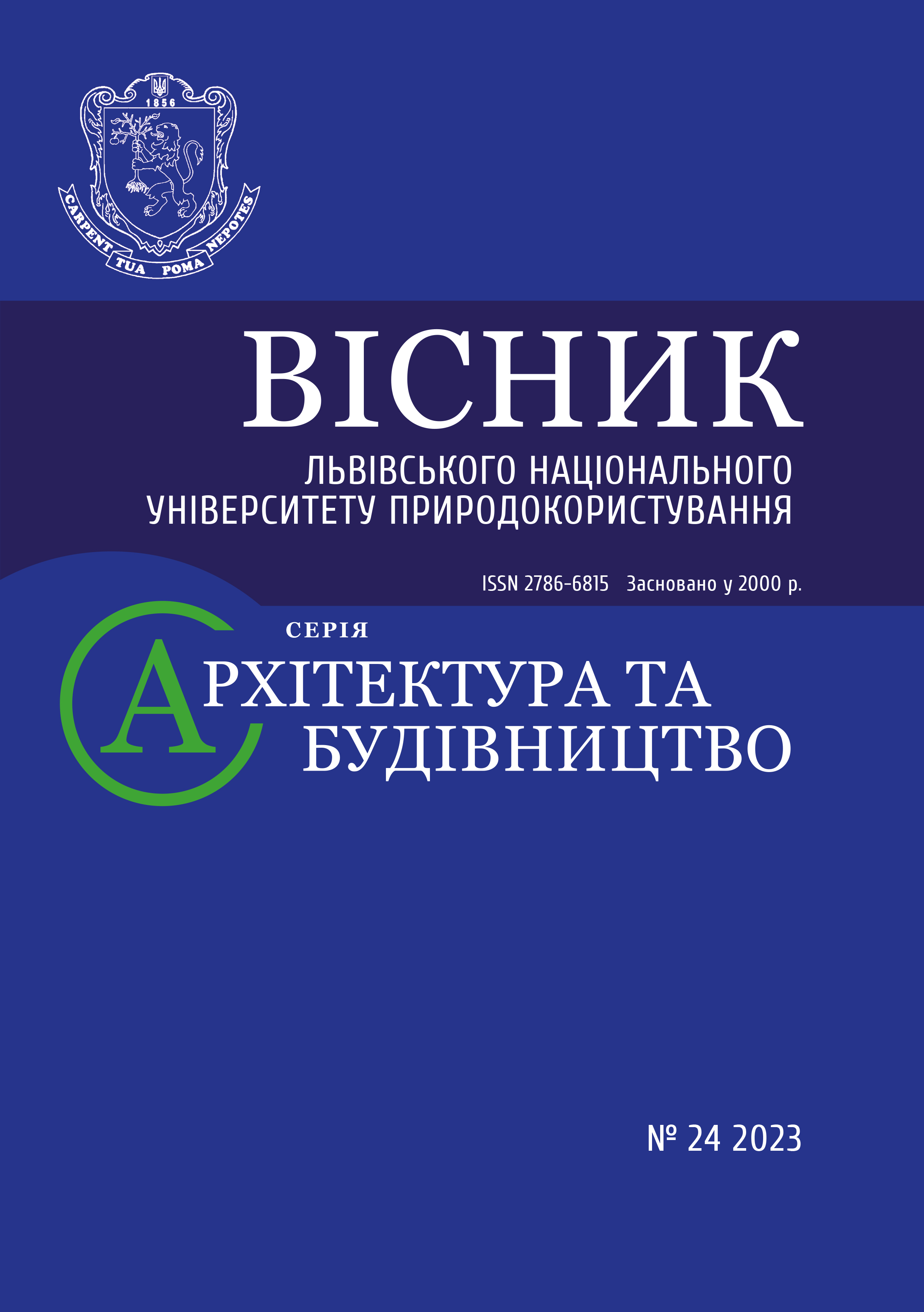IMPACT OF THE PARAMETERS OF HEAT POWER ENGINEERING ENTERPRISES ON THE SHARE OF AL2O3 IN THE PRODUCED ASH AND SLAG WASTE THAT IS USED AS AN ADDITIVE IN THE PRODUCTION OF BUILDING MATERIALS
DOI:
https://doi.org/10.31734/architecture2023.24.074Abstract
The research is devoted to the study of ash and slag waste of heat power engineering enterprises, which contains Al2O3. The annual volume of the waste in Ukraine is 8 million tons, and the increase of occupied land areas is 22 thousand ha. In the EU countries, more than 92% of such waste is recovered. Therefore, identification of a regression model for predicting the share of Al2O3 in the produced ash and slag waste of heat power engineering enterprises depending on the main parameters of influence, which can be used when developing a strategy for reusing the industrial waste in the production of building materials, is an urgent scientific and technical task. A multifactorial quadratic regression dependence of forecasting the share of Al2O3 in the produced ash and slag waste of heat power engineering enterprises depending on the main influencing parameters, namely capacity of the heat power engineering enterprise, duration of operation, the lower heat of fuel combustion, was obtained. It is determined that, according to Fisher's test, the hypothesis about the adequacy of the obtained regression model can be considered correct with 95 % confidence. The correlation coefficient is 0.99723, which indicates sufficient reliability of the obtained results. The obtained regression dependence can be used when developing a strategy for reusing the industrial waste in production of building materials. It is established that among the considered factors of influence, the share of Al2O3 in the produced ash and slag waste of heat power engineering enterprises mostly depends on the lower heat of fuel combustion, and the least – on the capacity of the heat power engineering enterprise. The response surfaces of the target function, i.e. the share of Al2O3 in the produced ash and slag waste of heat power engineering enterprises, are constructed. It allows to visually illustrate the dependence of this target function on the individual parameters of influence.
References
Bereziuk O. V. Computer program called «Experiment Planning» («PlanExp»). Certificate of copyright registration for the work No 46876. Kyiv: SSIPU. Date of registration: 21.12.2012.
Chen H., Xie W., Jiang L., Xu J. Mechanical and durability properties of concrete with nano-Al2O3 at low temperatures. Construction and Building Materials. 2019. No 223. P. 1005–1015.
Cherniavskyi M. V. Current problems of fuel conservation and fuel consumption of HPEs of Ukraine. Energy technologies and resource conservation. 2015. No 3. P. 3–17.
Gür S., Çelik T., Yücel H. E. Investigation of the mechanical and microstructural properties of high-strength concretes containing nano-alumina. Materials and Structures. 2017. No 50 (5). P. 1–14.
Koshlak H. V., Pavlenko A. M. Reduction of the technogenic impact of coal-fired heat power engineering plants on the environment (on the example of Burshtyn heat power engineering plant). Environmental safety and balanced resource use. 2017. No 2 (16). P. 108–118.
Kryzhanivskyi Ye. I., Koshlak H. V. Ecological problems of power engineering. Oil and gas energy. 2016. No 1 (25). P. 80–90.
Nematollahi B., Sobhani J., Ramezanianpour A. A. Effects of alumina nanoparticles on properties of high-strength concrete. Construction and Building Materials. 2017. No 155. P. 113–123.
Ocheretnyi V. P., Kovalskyi V. P. Use of industrial waste in the manufacture of finishing materials. Modern technologies, materials and structures in construction: collection of scient. works based on the materials of the V Ukrainian science and technology conf. Vinnytsia: VNTU, 2006. P. 169–177.
Okamura H., Sakata K., Mizutani K. Development of High-Strength Concrete Incorporating Ultrafine Particles. Journal of Advanced Concrete Technology. 2018. No 16 (12). P 697–712.
Peculiarities of the impact of ash dumps of heat power engineering enterprises on the environment / A. V. Yatsyshyn et al. Problems of emergency situations. 2018. No 2 (28). P. 57–68.
Study of the effect of aluminum additive on the physical and mechanical properties of concrete / I. O. Leshchuk et al. Scientific works of DonNTU. 2017. No 37 (2). P. 46–52.
Suganya O. M., Dhivya S., Ramalingam S. Influence of alumina nanoparticles on the mechanical and durability properties of cement mortar. Advances in Civil Engineering Materials. 2018. No 7 (1). P. 180–195.
Volianskyi V. I., Horobets M. I., Zhurenko O. M. Research of the physical and mechanical properties of bricks with aluminum oxide additives. Building materials, products and constructions: scientific and practical materials. conf. 2018. P. 230–234.


